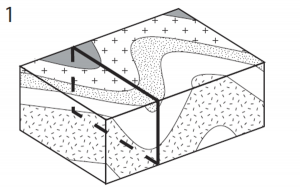The Effect of Sketching on Learning from Science Text
Seductive details refers to highly interesting information within an expository text that is only tangentially related to the target concept (Garner, Gillingham, & White, 1989). When the presence of this information results in reduced comprehension for readers compared to when the same text is presented without the seductive information, this is called the seductive details effect (Garner, Brown, Sanders, & Menke, 1992). Previous work has attempted, and in most cases failed, to reduce the seductive details effect through pre-reading instructions (Peshkam et al. 2011), moving the seductive details to the beginning or end of the passage, highlighting main ideas, and introducing learning objectives (Harp & Mayer, 1998). A growing body of research suggests that sketching activities are beneficial for science learning, and moreover, that sketching can improve learning from science text (Ainsworth et al., 2011; Van Meter & Firetto, 2013). Across two experiments, this study tested whether a post-reading sketching task can reduce the impact of seductive details and facilitate learning of a complex science topic compared to a post-reading summary task, and whether receiving feedback could help to further support successful learning. Results indicated that summarizing, rather than sketching, provided the greatest benefit to recall of core concepts and overall text comprehension. However, both sketching and summarizing were effective strategies for reducing the seductive details effect. That is, both strategies were successful in reducing the number of seductive details recalled at test. (http://dx.doi.org/10.1037/edu0000254)
Learning from incorrect examples
Previous work from the lab has demonstrated that students who create predictive sketches of the internal structure of block diagrams improve their penetrative thinking skills compared to students who just copy correct sketches of the internal structure of a block diagram. The current study intends to extend this work to see if correcting an incorrect sketch is as effective for improving penetrative thinking as generating a predictive sketch. The main question here is: Can correcting an incorrect sketch improve understanding as well as generating one’s own sketch?
In addition to investigating the effectiveness of incorrect examples for improving penetrating thinking ability, recent work also aims to employ an incorrect examples activity to help support learning from text.

You must be logged in to post a comment.